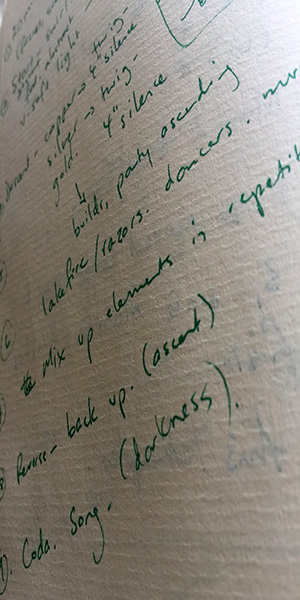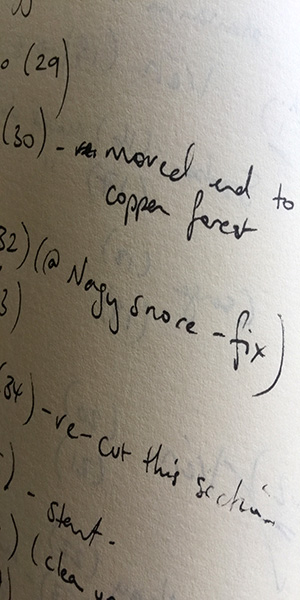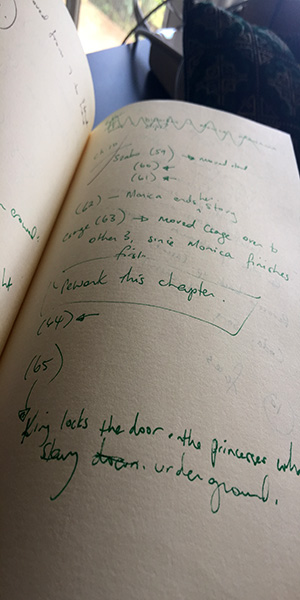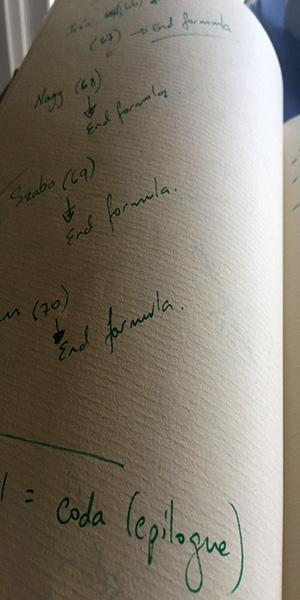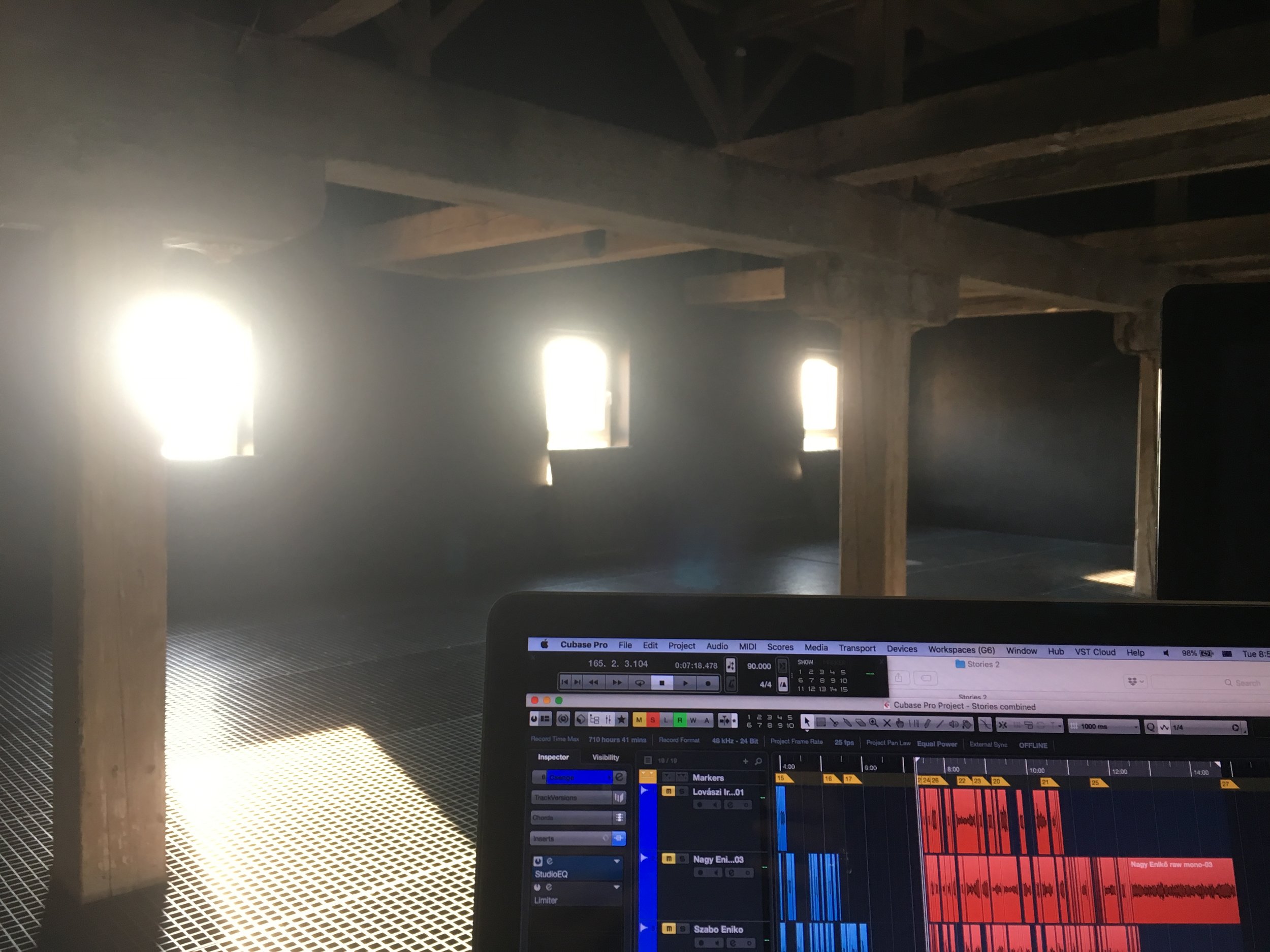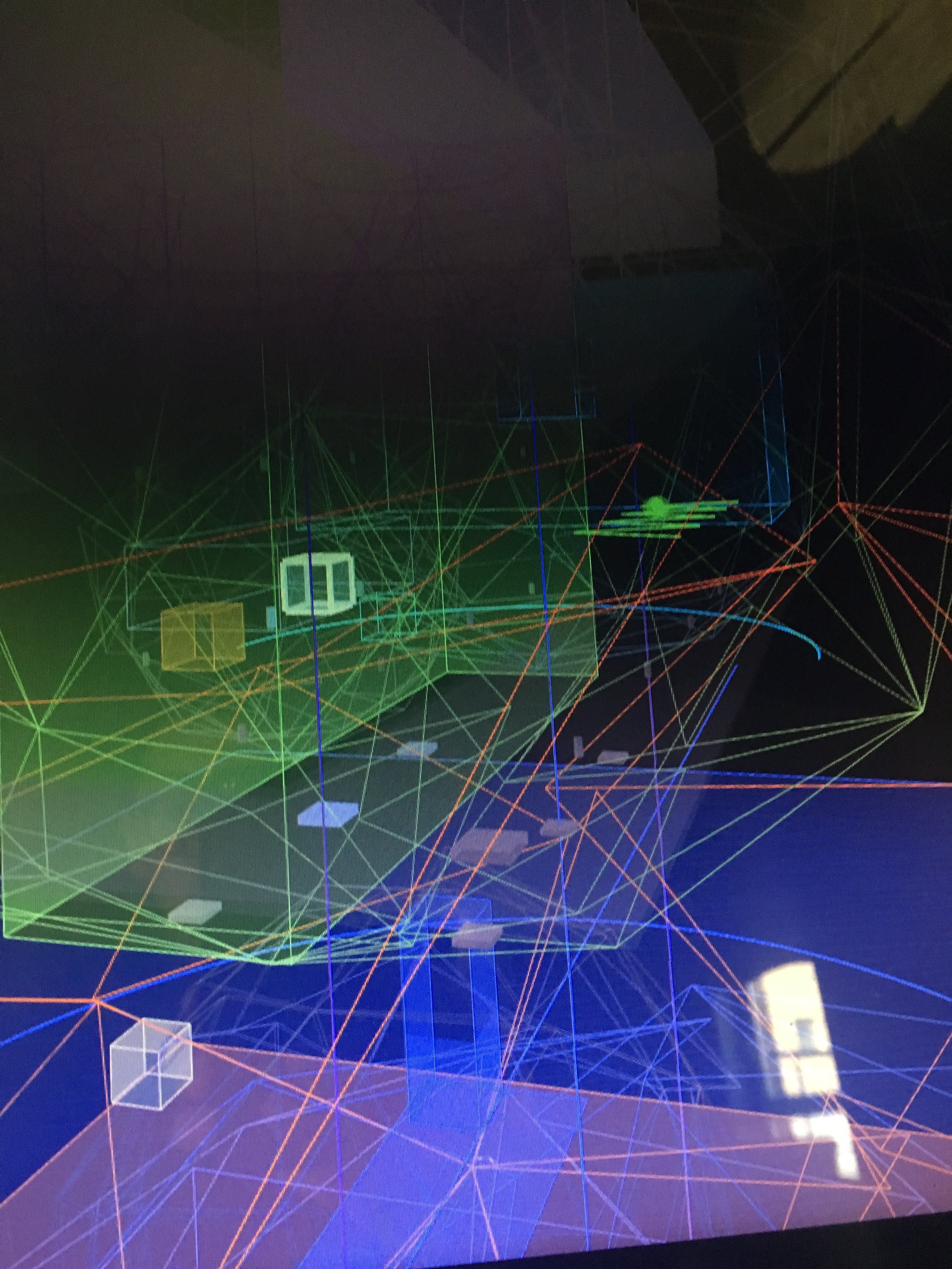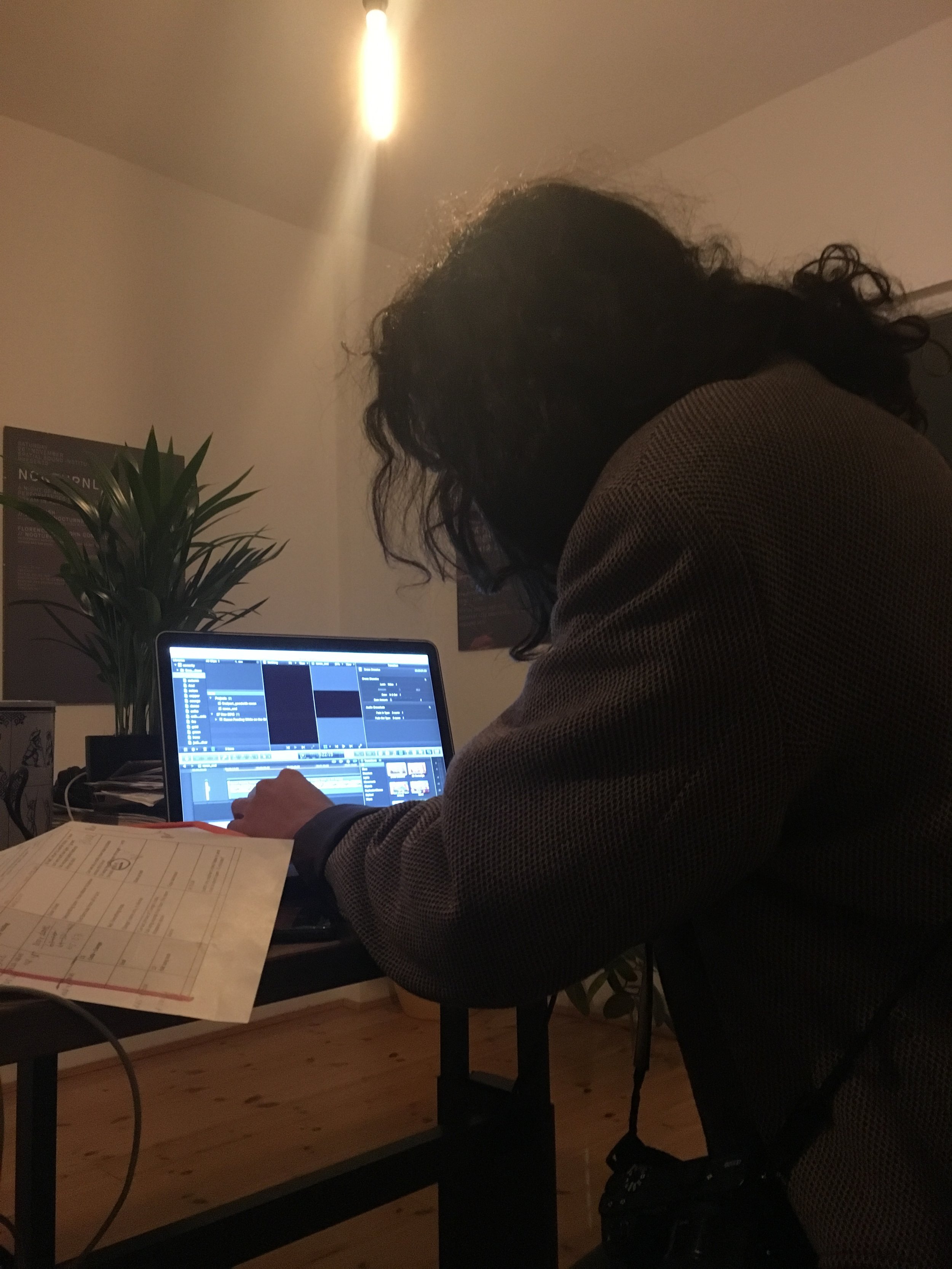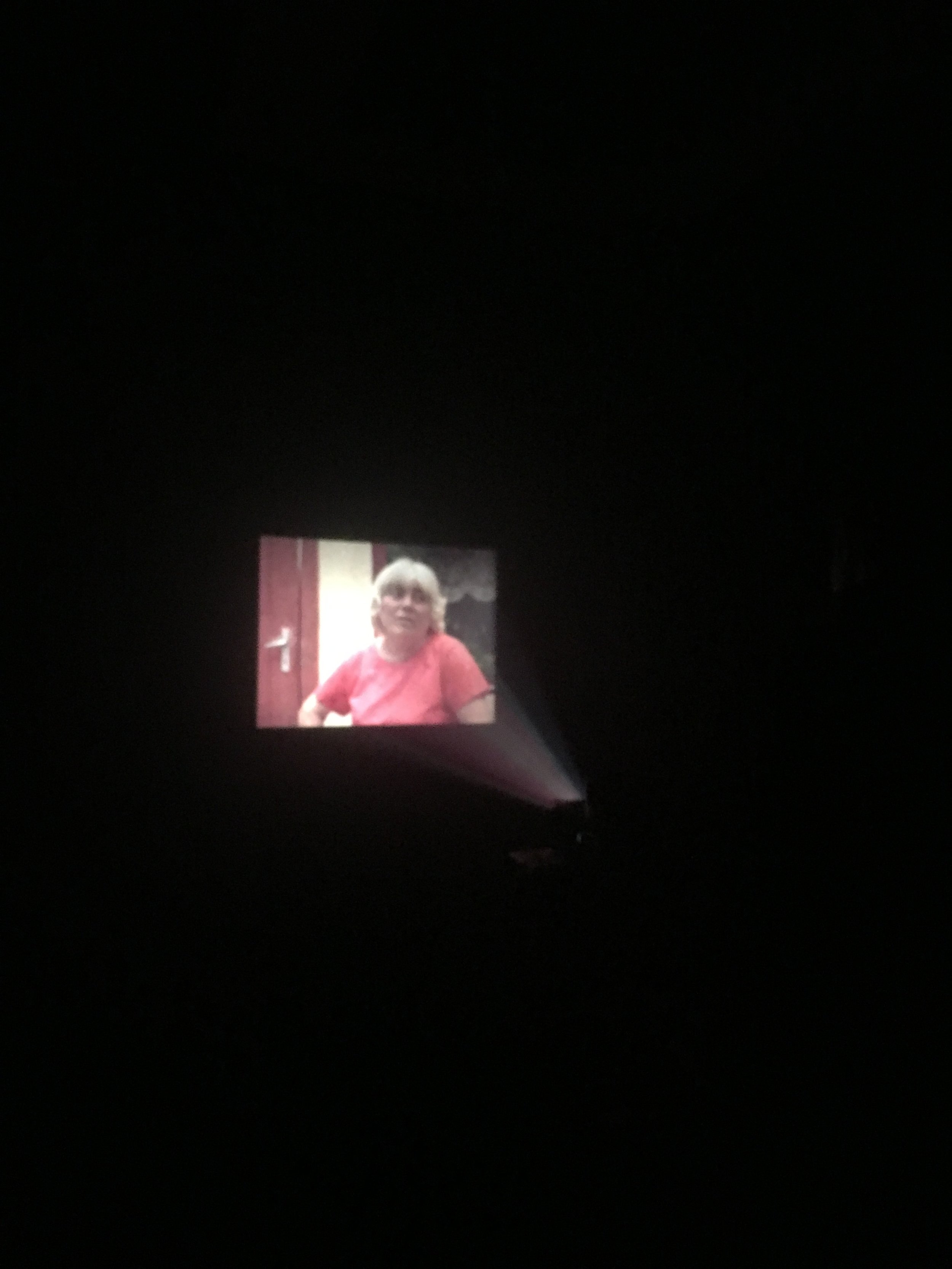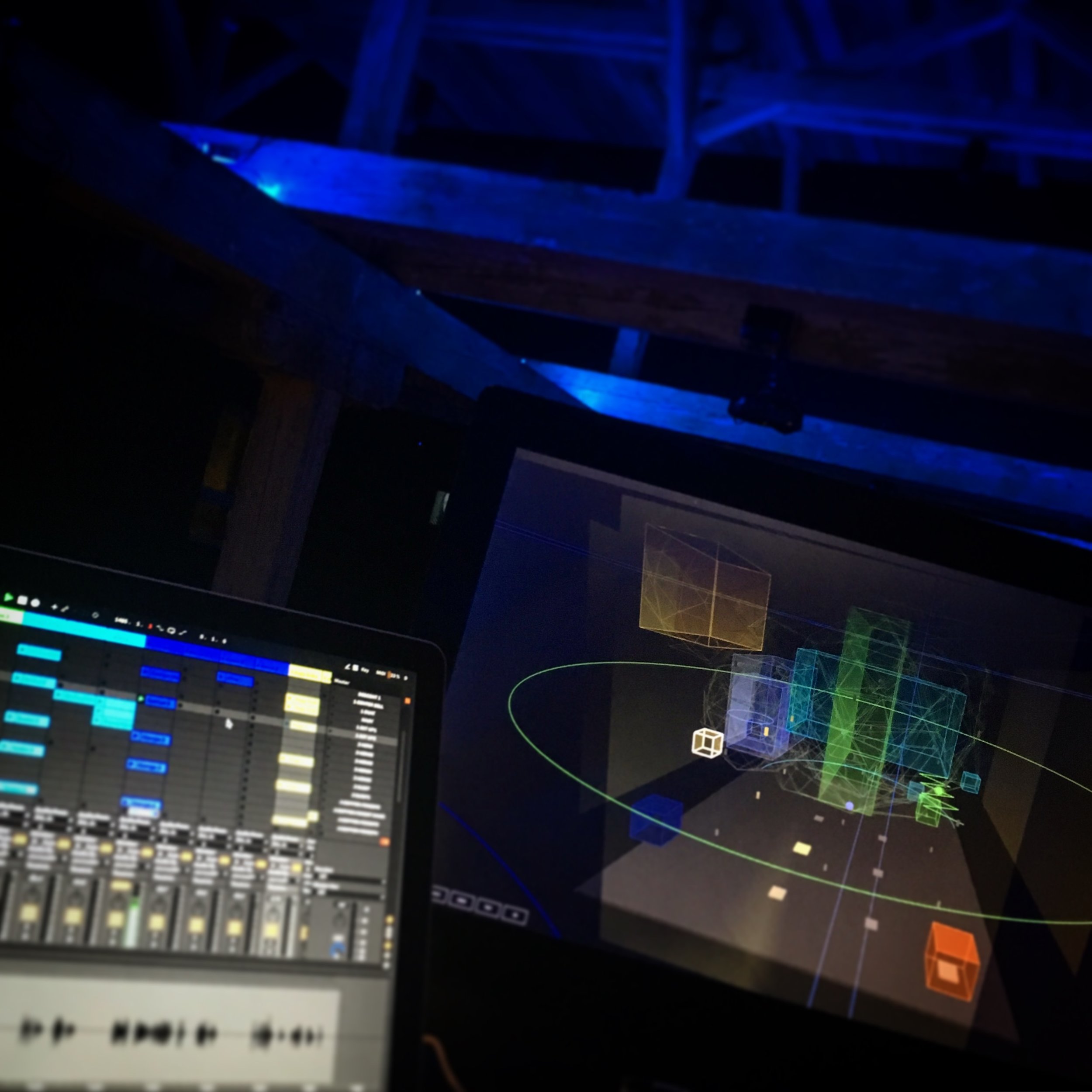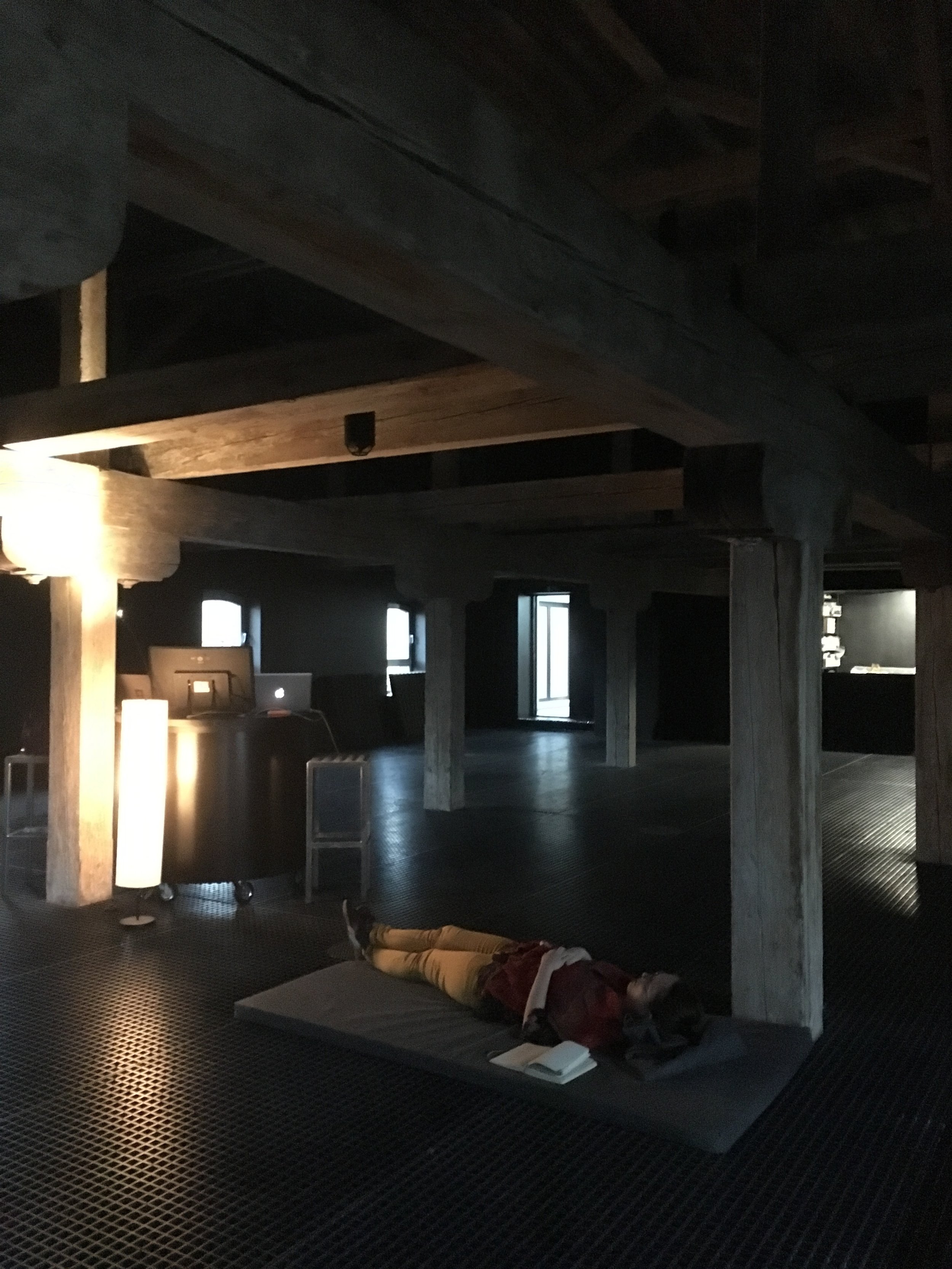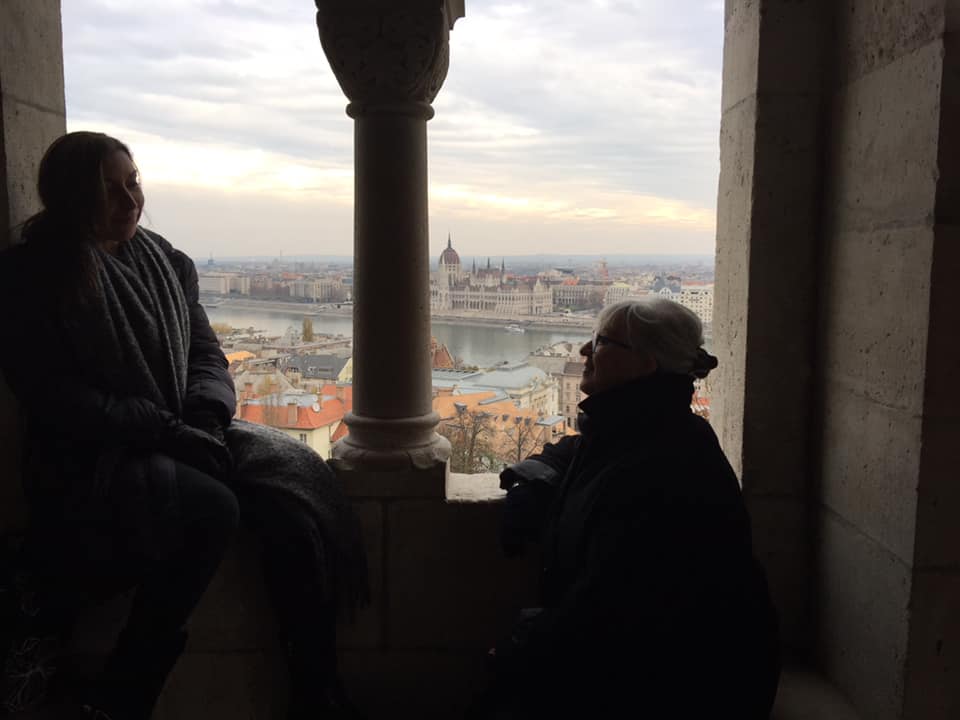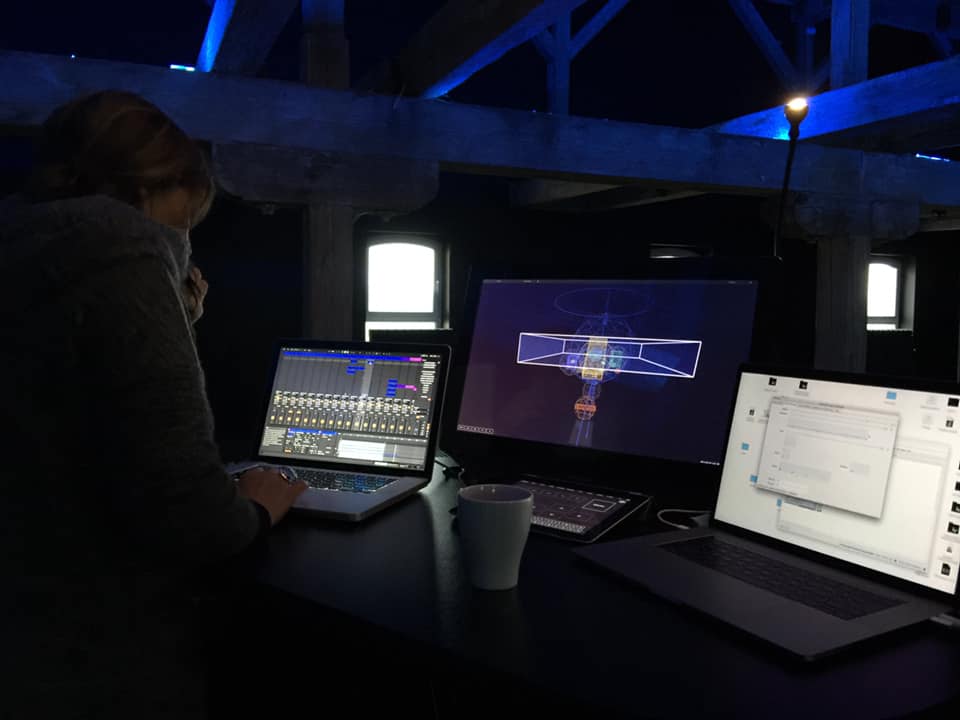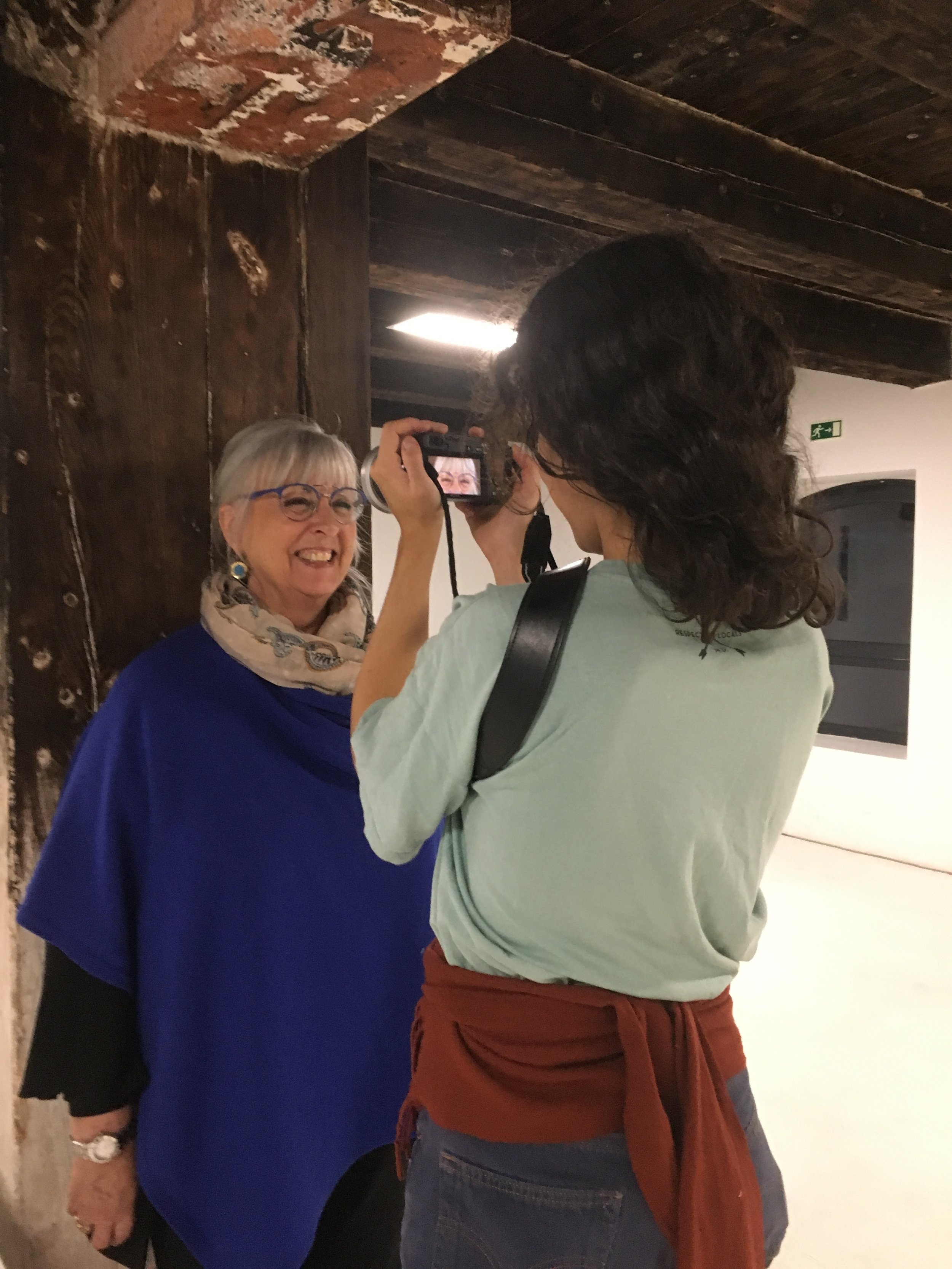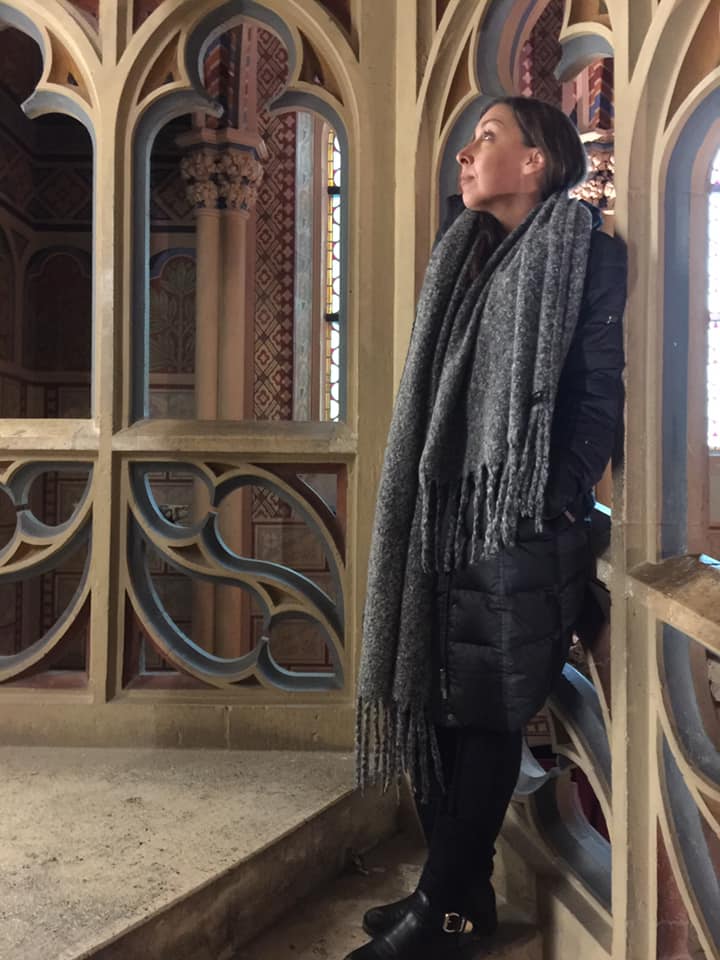10 – This is also theatre
Back in Budafok in November, I have about 4 and 1/2 weeks until the premiere. Csenge comes in to work with me in the studio. It’s important to make sure that I haven’t cut off or disrupted the tellers in the middle of phrases or story flows – the perils of working with text in a foreign language. So Csenge listens and advises where I need to move things back together, where I need to make more space.
In our first session, I’m amazed to discover that there are not that many fixes to make. When I was cutting up the stories in Cubase in the past month I was isolating each voice, then gradually putting together each group of voices. That meant that I was cutting and shifting things around quite a lot. I did this with confidence in my ability to hear the natural rhythm and flow of storytelling, but I had expected that I would disrupt the grammar and the phrasing much more than it appears I have.
Part of my linguistics training, and understanding, is in hearing the prosody in language – the dynamic rhythms and intonation, tone, stress, that signify meaning and also, in storytelling, actions. These six storytellers are all excellent at their craft, so they use very dynamic rhythmic and tonal ‘music’ in their speech to signify action / pause in action, important moment or thought, and change of scene or concept. I was aware of this as I worked but it hits me profoundly in the sessions with Csenge listening through all of the storytellers, one by one. There is more magic in this than I knew.
This is a long process and there are no shortcuts. Csenge’s innate understanding of narrative and story flow is also invaluable. Here my lack of understanding of the language is both problematic and interesting. (I guess it depends on your point of view as to how problematic it is – that weighs on me sometimes.) There are actions and moments in the stories that need to be highlighted, or shifted into different modes. Towards the end of the work, Csenge’s version continues after others have stopped. She suggests we keep the dance going, circling under the floor, but move it over to ‘her corner’ – where her voice is mostly based. It’s kind of like zooming out, shifting focus from being inside the action, to being outside looking in. In the studio these things are often quite subtle, especially with ambient sounds. But the physicality of the sound in here means that the effect, whilst consciously subtle, is powerful subconsciously/emotionally.
Ana and I are also working on the video for the exhibition. With the help of Peter at SSI, we have six small projectors and a media server to sync them. The concept is to have the storytellers’ faces in the space during the opening “walk-in state” as audiences enter, wander, and settle. Ana edits looped footage of each storyteller, to be projected in small “portals” straight onto the black walls of the studio, diffused by haze. As the story begins the faces will fade and the projected light will provide colour, texture, and mood for the rest of the show.
The “walk-in state” with primary sound fields and locations of the ‘portals’, projectors mounted on the studio’s wooden beams.
The idea is that the physical nature of projected light, its interactions with dust particles and haze/smoke, works in concert with the heightened sense of the physical nature of sound which the 4DSOUND system enables. Winding things back to subtlety, to minimalism, especially using video, feels refreshing. It’s tricky to figure out the balance and at first it always just feels way too bright. Ana experiments with filters both digital and physical, transparencies and brightness of the projector. When the image is around 15 inches on the black wall, the brightness wound right down, filtered with a colour overlay, there is a wonderful sense of timelessness. It just really works.
One of the first loops she works on is Irén, and Irén is timeless, so it’s truly magical. Ana’s films turn out to be beautiful little poems in themselves, lingering on the facial features, the eyes, the mouth, the hands, the back, the graceful and expressive animation of the tellers. Her camera focuses, un-focuses, weaves around them in a way that makes it seem the camera is not even there. The films are wistful and full of love.
For the rest of the show it is a matter of balancing the colour, and keeping the visual narrative to a minimum. Super-macro closeups, movement without arresting the attention. The visual colour scheme shifts with the ‘scenes’ of the story. We go from these loops into soft greens; into yellows; then the copper, silver, gold of the forests; then red/fire and in here, the only real visual storytelling - the dancing shoes of Válaszút; then blues, purples; then back to greens; then to black. The ‘black’ is actually very close-up footage of the feathers on the back of a crow – beautiful.
In Ana’s words:
“It was important for us to introduce the storytellers during the 'walk-in state' of the show, for the audience to get to know the details in their personality; their eyes, their expression explaining the story, their feeling... who are these woman? where do they come from? how do their eyes talk? Being all the storytellers so different it was so beautiful to be able to capture them and build a conversation, also, with their visual presence. Therefore during the show the audience would picture in some way who is telling the story to them, enhancing in this way the importance and power of these women, of the storytellers, by giving space for them to appear complementing their voices. Once the show starts, this 'realistic' image fades as well as the need to explain a linear narrative through visual sources as the soundscape rises inviting the audience to dive into the imaginary, driven by the story in itself and the soundscape to all the different worlds, emotions... During the show the film aims to encompass and follow the story by means of six flickering dim light sources that remind of old film projections of pale light shifting and moving as if they were the voices in itself. Through the evolution of the story, in every world, you are brought to a gradient of colour and to a rhythm that keeps evolving. All of the tones are born by a process of magnifying details of nature, pieces of the travelling that we underwent to listen to the different storytellers around diverse Hungarian regions. The film wants to bring up the concept of faded visual stimulation, not interfering on the main focus of attention which is deep listening, by creating atmospheres where details of our everyday world are shown as particles in itself, with its magnified details and movement, such as in Lisa's subtle soundscape.”
Vlad tapes up the edges of the projector lenses with gaffer tape, giving each of the projections a fuzzy edge. It’s the perfect touch – we are now in the realms of the imagination. He and Peter also put a fan downstairs to better disperse the haze through the room. I could spend hours here listing all of the ways in which Vlad has made all of this possible for me. From producing super glue when my boot broke, producing wireless headphones when I suddenly decided I needed them for the dancers, producing a glow-stick in a nightclub when we started to get bored … to fixing my camera, fixing my occasional stuff-ups in Ableton, fixing anyone’s lack or surfeit of anything, really.
I’m a little tired by now, feeling the pressure of getting all of the multi-layered threads of the sound installation tied up, in time. I’m working heavily with automation in Ableton, in Session mode. I had early on tried recording in the Arrangement mode but that became far too fiddly and also just a frustrating mode to work in. The session view gives me a sense of being able to ‘play’ this ‘live’ … triggering clips and being able to see where everything is, tweak as I go, and allow for possible serendipities. Not too automated – keep it real if you can. But every object that needs to travel on a path, or grow or contract, or otherwise change, needs automation in the clips. I am organising clips into scenes and in each scene clips are triggering more automation. Particularly for the voices, I need to make sure that their position at the end of one scene correlates to their position at the start of the next, or they ‘bounce’ when the next scene is triggered. This is the most time consuming thing, managing the voices. At times, one of the storytellers will suddenly walk across the room to the other side, or wander off into the distance. This is not magic – this is me not getting the automation right – but it feels sometimes like they are playing with me. It is very like herding cats! This happens with Irén, and I decide to leave it in. As she finishes her story her voice wanders off the ‘stage’, through the wall, out into the distance, her laugh fading. It’s funny, perfect for her. Every object has a movement, of some kind, sometimes extremely subtle. Using a global clip, I have the entire room spinning counter-clockwise, at two moments in the show – the beginning of the show and near the end, with the dance. All of this kind of movement needs to be drawn. I won’t be playing the show live (though I could). Vlad will record it the night before. So I’ll play it through for the recording. That reminds me of the early days of using tape, doing the final recording, start to finish. It’s a nice sense of completion, ‘putting it in the can’.
My parents visit in the middle of the month and we have a lovely weekend exploring Budapest. It’s a nice break from all the intensity. My father is a powerful artistic soul and to get his perspective on this work, and his grounding support, is so valuable at this moment in the process. At one point, Ana had suggested that we use film of my mother’s eyes to close the show. We were both transported by this idea for a while. “…So the show ends. So we open the door, and there is your mother...” Ana films my mother and it’s a satisfying moment. But, later, the video file vanishes. When that happens it seems ‘meant’ – like everything in this project. It’s fine; it possibly just isn’t necessary. But the acknowledgement of my mother is important to me even if it’s not in the final show. Having her here gives me strength and energy and re-focuses me. Also, I can’t help pulling on this thread throughout this project of the mother being absent … of the mother’s wisdom being ignored, or lost …
Paul is a huge help in one of the last sessions, working on the quality and presence of the voices, pulling up the frequencies that bring the different voices to life. I work more on their movement, finding moments where the different voices pair or match well, and moving them around so that they complement each other – finding the sonority. This whole project has been about this, in essence. The sonority of this chorus of spoken voice. Voices that are both present and absent. Absent in physical human form, but present in the physical form of the sound that this room produces. When I get it right, the voice is not an amplified voice – it is a substantive, dimensional being. The most exciting thing about this, when it works, is that the technology has really, finally, disappeared. And I keep saying this when talking about 4DSOUND - this is a hugely emotional experience. Because the amplification (perhaps the fourth wall in sound terms) has been removed, we are listening in a very intimate way. The way we listen to our friends, our mothers, our fathers, our children, our guides, our storytellers. It seems to trigger a more fundamental emotion. Irén’s voice is more obviously ‘amplified’ due to the treatment I’ve had to give it, and Nagy Eniko mostly seems to float above. But all of the other storytellers have real, profound moments of presence in the room.
We also work on the final folk song, finding the frequencies that are feeling unnatural, as it sweeps up and through the room. With his help I am able to give this moment far more presence and impact. Balancing frequencies has been probably the most challenging thing for me in this space. That is to a great extent due to variance in the raw recordings, but it’s also due to the unfamiliar nature of this system and the way that sounds mix and resonate. I’ve written about this earlier. These final sessions, I feel that I have got the balance right overall, but I would definitely like more time to make some sections sound cleaner. Then again, I am interested to know what the audience response is since this work is perhaps more organic, less refined than what is often presented in here.
The work in the studio is happening alongside the administration of contracts, and payments, budgeting, and promotional texts, and preparing for the trip back to Australia. I’m feeling calm but I know that ideally one more week would lead to a completely finished show. There are two sections in which I’d like to change the atmospheric sound, provide more dynamic movement, provide a shift of interest. I’m aware that in these two sections, there is potential for the experience to “drag” – the voices become monotonous. If I had the time, I’d change that … but I don’t have the time. And also, this is a part of this experimental work. Observe the audience, especially in these sections. How taxing is this for the listeners? Let’s find out.
There are moments when I feel as though I need to justify my focus on the theatrical elements and my desire for it to be all in place. This is theatre, as much as this is experiment. This experiment is partly about theatre. Theatre is the play with the border of illusion/reality. It is bringing a story to vivid life in a physical, sensory experience, and that takes a lot to achieve. So much sound art, sound installation, is a kind of revolving door, walk-in/walk-out experience. I’m interested by this slight pressure to care less about the little things that add up to the theatrical experience. It’s really only slight and perhaps some of it comes from me. I make a conscious decision to embrace these uncertainties, and observe how it plays to an audience. I’m feeling enormously grateful for being in this place, being supported in trying to achieve this, and also being supported in my fiercely focused and slightly scattered work-in-progress-state through the warm and happy family of artists in residence. There is amazing work happening all around me and the inspiration of that is unmeasurable. I also need to make a conscious decision to enjoy the exhibition – though I know that's going to be hard to do!
After the last long studio night session it snows, just a little, just a soft flutter of white between the dark tall buildings of AQB. Ana and I sit in the lane watching, wrapped in our warm coats and sipping hot whisky toddies and talking about this adventure we’ve shared. This journey into the rich, dark, vibrant soul of Hungary. I’m feeling ready and excited now to share this work, and to experience it with an audience.

